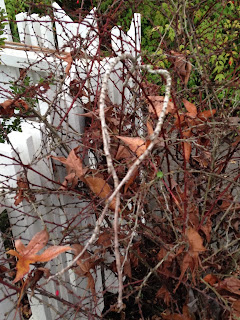In a recent worship service in a memory care home, the pianist continued to play after communion was served. I am grateful for those moments because they allow me some time to simply pause. As I looked around the room, I realized that some of the people I have known for awhile were growing frail and distant. Some are still able to surface, but not all, and I was already missing them. Yet, there are still the surprising moments, such as when we began to sing our alleluias, a resident who has never responded to the worship or to my greetings, began to sing that one word softly. Her face had the look of one who was seeing someone or something she loved. I longed to know but knew I would not. That moment was hers; I could only watch from the sidelines.
I continued to look around and I observed the staff, who come from a variety of backgrounds and cultures, tend to the needs of those they serve. Their work is not easy, and can become isolating. That is a large part of why we in SpiritCare continue to show up. Just to let both staff and residents know that we see, and God sees some of their sacrifices and their care. We celebrate the Love that gathers us in.
It was then that I had the idea to ask those gathered to pray for our nation by singing "America the Beautiful." I was given then the gift of many smiles, and we began to sing. At that moment, America did look beautiful to me because what I was seeing was resilience. As we lifted our imperfect voices and crumpled words, or simply nodded our heads, or even just barely managed a smile, I wanted the world to witness that moment. To live out our frailties, our illnesses, our vulnerabilities in community is humbling. It is seldom easy. Yet, we are not on this planet to pursue slogans that tantalize us with the notion that we can live unfettered by weakness and dependence. Such pursuits can only result in fear, hoarding, and destruction. Christians, that is not our call. Christ is found when we heal together, both the weak and the strong.
I want to share this longish passage from the introduction to the book, Called to Community, The Life Jesus Wants for His People,edited by Charles E. Moore. Moore writes:
Dr. Paul Brand, who devoted himself to eliminating leprosy, was once analyzing some five-hundred-year-old skeletons of leprosy victims that had been dug from a monastery. He remembered a lecture he heard given by anthropologist Margaret Mead, who spent much of her life researching prehistoric peoples. She asked her audience, "What is the earliest sign of civilization? A clay pot? Iron? Tools? Agriculture?" No, she claimed, it was a healed leg bone." Brand recalls:
She explained that such healings were never found in the remains of competitive, savage societies. There, clues of violence abounded: temples pierced by arrows, skulls crushed by clubs. But the healed femur showed that someone must have cared for the injured person - hunted on his behalf, brought him food, and served him at personal sacrifice. Savage societies could not afford such pity. I found similar evidence of healing in the bones from the churchyard. I later learned that an order of monks had worked among the victims: their concern came to light five hundred years later in the thin lines of healing where infected bone had cracked apart or eroded and then grown back together.
Let us tend to one another. Surely such care is in our bones.
Called to Community, The Life Jesus Wants for His People, edited by Charles H. Moore, Plough Publishing House, 2016, page xx, xxi.

No comments:
Post a Comment